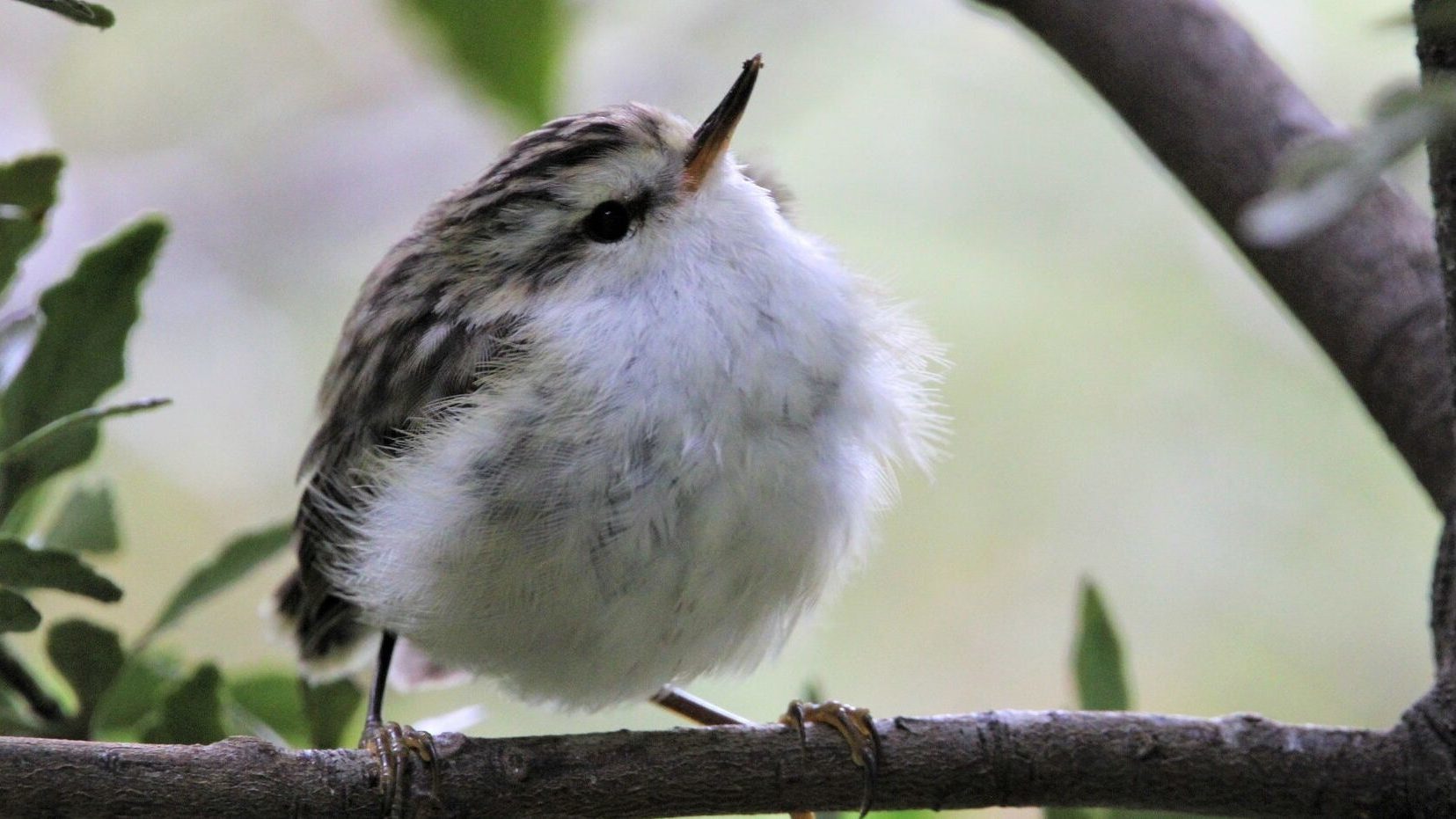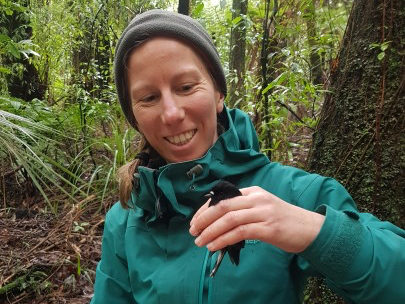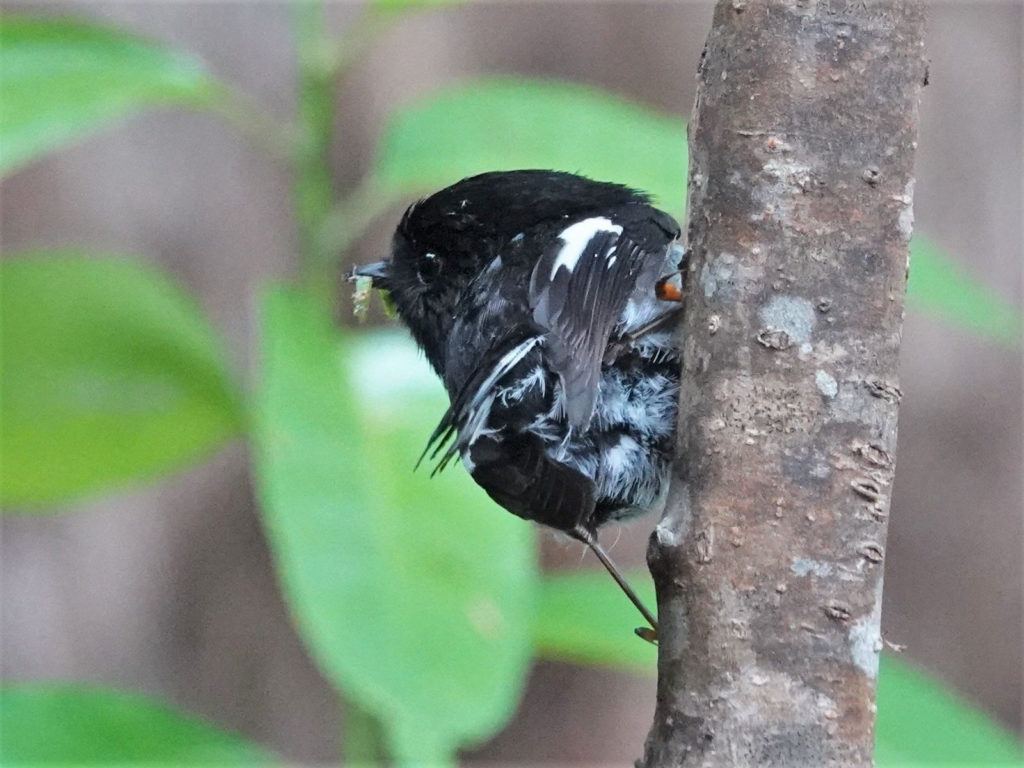As climate change and introduced mammals push native birds into higher mountain forests researchers at Manaaki Whenua – Landcare Research wondered if there was enough food to survive and breed.

As Dr Anne Schlesselmann et al. explains in this Journal of Ecology research paper, the answer is complicated and more research needs to be done.
Filling in knowledge gaps

Previous research tells us the double whammy of “thermal squeeze” and introduced predators is forcing low-lying forest birds higher, but the relationship between elevation, food supply and reproduction is not well understood.
Would native insectivorous bird species have enough to eat up there? If not, would they be less successful in breeding?
Investigating answers to these questions required a pair of good binoculars and a heap of patience. Dr Schlesselmann and her team tackled the steep slopes of Mt Pirongia in Waikato to sample invertebrates and monitor the fate of 55 tītitipounamu (rifleman) and 33 miromiro (tomtit) nests.
The results “somewhat supported” the theory that less invertebrate food would be available for birds at higher elevations and that their reproductive success would be lower.
In general though, nest survival and the number of fledglings produced by tītitipounamu and miromiro were not strongly related to elevation or food availability.
The study shone a bright spotlight on the need for more research in this area.
“Determining the factors that limit populations in this way is fundamental for effective conservation management of New Zealand’s threatened bird species,” it said.
“If places with optimal conditions [plenty of food and habitat] can be identified, these can be targeted for predator control and lead to faster recovery of dwindling bird populations.”
Hampered by secretive birds and dense vegetation

While researchers chose Mt Pirongia because predator numbers are suppressed, enabling them to more clearly explore the effects of elevation on food supply, working on the mountain was “incredibly challenging on so many levels.”
The research team sampled invertebrate biomass over 18 plots across three elevational bands as a measure of prey availability for tītitipounamu and miromiro and simultaneously monitored these species’ reproductive success across the elevational gradient.
“Pirongia has beautiful tall tawa trees and very steep slopes. The only access is by walking up the hill. The higher you are, the windier and colder it is. Following birds in tall canopy was tricky and required a lot of patience as birds are very good at being secretive about their nests,” says Dr Schlesselmann.
Co-researcher John Innes agrees, “Studying food availability for birds is harder than studying predation and has rarely been done in New Zealand.”
Measuring food availability for insectivorous birds that forage on a wide range of invertebrate prey was also challenging. The authors suggested future studies could benefit from using a wider range of methods, such as sweep netting or sticky traps to ensure sampling of a broader range of invertebrates.

